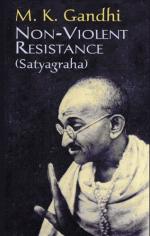|
This section contains 213 words (approx. 1 page at 400 words per page) |

|
India
Gandhi's home and the land he freed from British rule.
South Africa
Gandhi began his practice of non-violence in South Africa to secure civil rights for Indians there.
Gujarat
The westernmost state in India and Gandhi's home state.
Vykom
The capital of the Indian state of Kerala and the site of the Vykom Satyagraha.
Britain
The country that ruled India for much of Gandhi's life.
Kheda, Bardoli, Rajkot
Names of three areas that saw Satyagrahas.
Satyagraha
Gandhi's spiritual philosophy of love, truth and non-violence.
Ahimsa
The belief in total nonviolence.
Fasting and Asceticism
Gandhi encourages the Satyagrahis to engage in various ascetic practices that he used to purify his own spirit and body.
The Salt Tax
The salt tax was a punitive tax on salt imposed by the British; Gandhi led a revolt against this tax.
British Rule
The British ruled India during Gandhi's life, but through...
|
This section contains 213 words (approx. 1 page at 400 words per page) |

|




